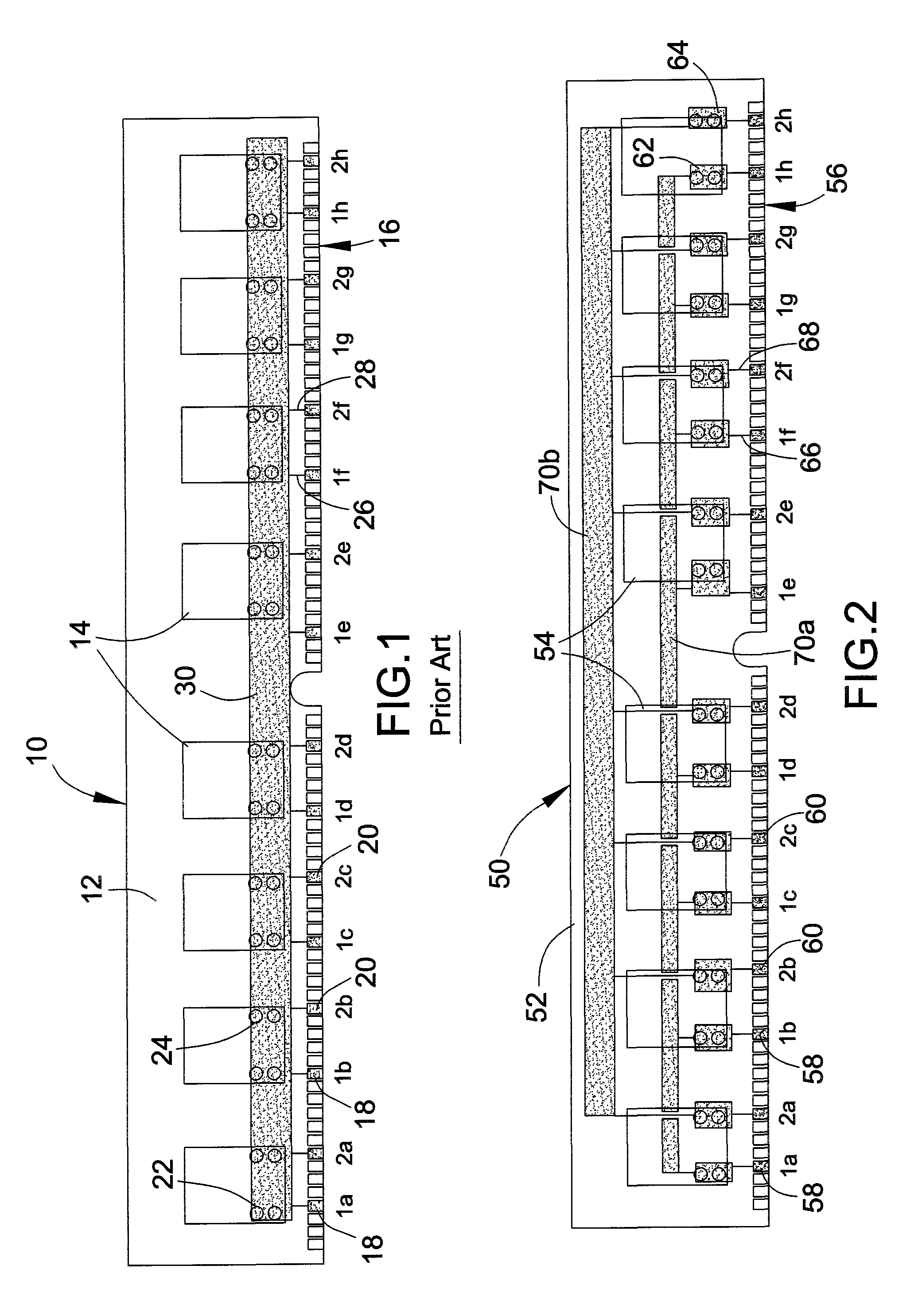Memory modules and methods for modifying memory subsystem performance
a memory subsystem and memory module technology, applied in the field of memory subsystems, can solve the problems of performance bottlenecks, difficult retroactively changing the power plane design of the motherboard, and compromising the reliability of the memory controller, so as to optimize the performance of the memory subsystem
- Summary
- Abstract
- Description
- Claims
- Application Information
AI Technical Summary
Benefits of technology
Problems solved by technology
Method used
Image
Examples
Embodiment Construction
[0021]FIGS. 2 through 5 schematically represent memory modules 50 configured to allow different supply voltages to be supplied to the core (VDD) and I / O portions (VDDQ) of memory components (chips) 54 on the modules 50. For convenience, consistent reference numbers are used throughout FIGS. 2 through 5 to identify the same or functionally equivalent elements.
[0022]Similar to the memory module 10 of FIG. 1, the memory chips 54 of each memory module 10 schematically represented in FIGS. 2 through 5 are mounted on a PCB 52 having an edge connector 56 comprising individual pins, some of which are VDD (core supply) input pins 58 and others are VDDQ (I / O) input pins 60. In contrast to the module 10 of FIG. 1, VDD and VDDQ input pins 62 and 64 of the chips 54 are not at the same voltage as a result of being connected to the pins 58 and 60 through a common voltage plane, but instead receive their voltage from primary and secondary voltage planes 70a and 70b on the PCB 52. The voltage planes...
PUM
 Login to View More
Login to View More Abstract
Description
Claims
Application Information
 Login to View More
Login to View More - R&D
- Intellectual Property
- Life Sciences
- Materials
- Tech Scout
- Unparalleled Data Quality
- Higher Quality Content
- 60% Fewer Hallucinations
Browse by: Latest US Patents, China's latest patents, Technical Efficacy Thesaurus, Application Domain, Technology Topic, Popular Technical Reports.
© 2025 PatSnap. All rights reserved.Legal|Privacy policy|Modern Slavery Act Transparency Statement|Sitemap|About US| Contact US: help@patsnap.com



